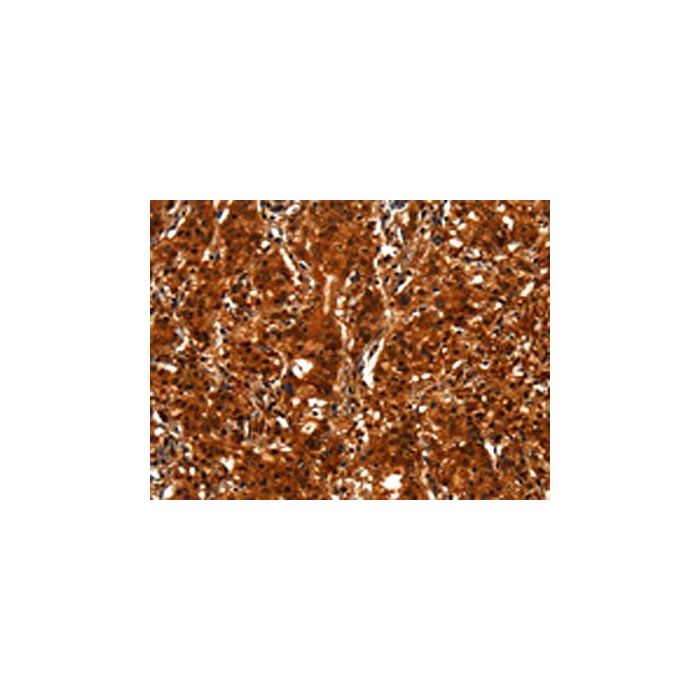| Product Name | BCAS3 Antibody |
|---|---|
| Description | Rabbit polyclonal antibody to BCAS3 |
| Synonyms | 1500019F07Rik antibody; 2610028P08Rik antibody; AU021018 antibody; BC028339 antibody; BCAS3 antibody; BCAS3_HUMAN antibody; Breast carcinoma-amplified sequence 3 antibody; FLJ20128 antibody; GAOB1 antibody; K20D4 antibody; MAAB antibody; Maab1 protein antibody; MGC4973 antibody; rudhira antibody |
| Host | Rabbit |
| Clonality | Polyclonal |
| Conjugate | Unconjugated |
| Immunogen | Synthetic peptide of human BCAS3 |
| Isotype | IgG |
| Target | BCAS3 |
| Reactivity | Human, Mouse |
| Applications | ELISA, IHC |
| Form | Liquid |
| Diluent Buffer | -20°C, pH7.4 PBS, 0.05% NaN3, 40% Glycerol |
| Uniprot | Q9H6U6 |
| Storage | Upon receipt, store at -20°C or -80°C. Avoid repeated freeze. |
| Background | BCAS3 (breast carcinoma amplified sequence 3), also designated MAAB or GAOB1, is a 913 amino acid protein that is believed to be involved in breast cancer progression. The gene is regulated by ER (estrogen receptor alpha) and expressed in multiple tissues, including malignant human brain lesions. It is overexpressed and amplified in breast cancer cell lines. BCAS3 contains three WD40 repeat regions, a bromodomain, a rare zinc-finger motif, four probable DNA-binding domains, and two kinase-inducible phosphorylation domains. Five variants are produced due to alternative splicing. BCAS3 interacts with histone H3 and PCAF, which is indicative of histone acetyltransferase activity. BCAS3 also exhibits ER transactiviation activity by acting as a coactivator with PELP1 or MTA1. The amplification and translocation between the BCAS3 gene and the BCAS4 gene results in a fusion transcript is overexpressed in MCF-7 cells. |
| Supplier | Cusabio |
All Research Products are sold for laboratory RESEARCH USE ONLY and ARE NOT TO BE USED FOR HUMAN OR ANIMAL THERAPEUTIC OR DIAGNOSTIC APPLICATIONS. The information presented is believed to be accurate; however, said information and products are offered without warranty or guarantee since the ultimate conditions of use and the variability of the materials treated are beyond our control. Nothing disclosed herein is to be construed as a recommendation to use our products in violation of any patents. ARP American Research Products, Inc. does not submit its products for regulatory review by any government body or other organization, and we do not validate them for clinical, therapeutic or diagnostic use, or for safety and effectiveness. You are solely responsible for making sure that the way you use the products complies with applicable laws, regulations and governmental policies and for obtaining all necessary approvals, intellectual property rights, licenses and permissions that you may need related to your use. Under no circumstances shall ARP American Research Products, Inc. be liable for damages, whether consequential, compensatory, incidental or special, strict liability or negligence, breach of warranty or any other theory arising out of the use of the products available from ARP American Research Products, Inc. Nothing contained herein warrants that the use of the products will not infringe on the claims of any patents covering the product itself or the use thereof in combination with other products or in the operation of any process. ARP American Research Products, Inc. disclaims any and all representations or warranties of any kind whatsoever, express or implied, including without limitation any implied warranties of merchantability or fitness for a particular purpose, of non-infringement, or regarding results obtained through the use of any product, whether arising from a statute or otherwise in law or from a course of performance, dealing or usage of trade.



